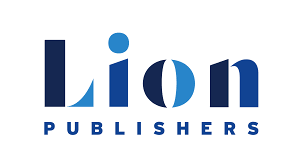The Hopewell Borough Council hosted a special meeting on Monday, September 24 to provide the public with another opportunity to learn about the redevelopment plan for 57 Hamilton in Hopewell Borough.
As Mayor Ryan Kennedy had recused himself, Council President Krista Weaver started things off by informing attendees—both in person and via Zoom—there would be two public comment periods during which speakers would have five minutes and three minutes, respectively, to make statements and ask questions.
Hopewell Borough’s planner, Joanna Slagle of Banisch Associates, gave the first presentation on the technical details of the planning process, and covered the major aspects of the redevelopment designation, including a review of terms and steps along the way.
“[The developer] cannot pull permits or begin construction until they get all their approval, from not only [local government] but also the County and State,” said Slagle. She added that a redevelopment plan “provides the uses and development regulations permitted” while the site plan process “shows details of all proposed development.”
At this point, Borough Council has already adopted the redevelopment plan via ordinance. The purpose of this meeting was to provide residents with a glimpse of the concepts being considered by the developer, Princewood Properties, not to reconsider the adoption of the plan itself, Slagle explained.
One aspect of the redevelopment plan however could be subject to revision. According to the Borough website, public and Council discussion could lead to redefining the “maximum building height limitation,” currently set at three stories.
Developer Jeffrey Albert shared two sets of concept plans. One set adhered to the limits and specifications set forth in the ordinance as it has been adopted, while a second set of concept plans reflected, according to Slagle, “concerns floating around over the past two months,” likely referring to many concerns voiced in the meeting. If the first set is adopted, no further action is needed. If the second set is adopted, and changes must be made to the redevelopment plan, then Council would need to go through its official process for amending it.
Albert began his portion of the presentation expressing appreciation for the opportunity to “explain some of these things” and to “solicit some comments and advice.” The developer then provided with concept plans for 3-story multi-unit housing as well as a smaller footprint of 4-story units. The building styles are meant to “echo” other buildings in town, particularly the nearby Chocolate Factory, according to Albert. Attendees and viewers were then able to review computerized renderings of each set of concepts from various angles.
The Council asked Albert details about unit density and stormwater management, and Councilmember Heidi Wilenius, joining via Zoom, asked about the architecture, styling, and color schemes. Albert responded that virtually all aspects of the aesthetics are subject to change.
Almost 45 minutes into the meeting, the public comment period was opened by Council President Weaver, who reminded potential speakers of their five-minute limit.Concerns raised in the first comment section included traffic impacts, housing density, affordable housing, the proposed PILOT program which includes tax incentives, accessibility features of the new development, the perspective of local business owners, and environmental impacts.
Watch the full Hopewell Borough special meeting here: https://www.youtube.com/watch?v=w9grpReaIrQ
In response to the public’s concerns, Joanna Slagle explained the background of affordable housing and the impact of the State’s legislation on New Jersey municipalities.
With regard to concerns about adequate parking, Albert outlined the three areas of parking for residents of the proposed development: the lot on Somerset Street, parking spaces on the property, and “parallel parking spaces on the streets” which will be designated. He suggested that one benefit of on-street parking is that it “narrows the street” which encourages drivers to slow down.
When asked to comment on stormwater concerns, Albert communicated that he cannot comment because those plans are not available at this point in the planning process, and there are too many variables at this time, although he did emphasize that stormwater engineering remains a top priority of the developer.
Councilmember David Mackie remarked that builders are “not allowed to increase the risk of flooding” by virtue of their design and construction of buildings.
Next, one of the Borough’s attorneys responded to questions about the redevelopment’s Payments In Lieu Of Taxes (PILOT), an agreement meant to encourage developers and merchants to do business in town. While the County does receive a small portion of PILOT payments, the municipality, including its schools, are meant to receive the bulk of the amount. To enter in a PILOT, an ordinance must be adopted ahead of time.
Residents continued to raise concerns over stormwater management, traffic, and impacts to the population during the second public comment section.
Council agreed to introduce an amended ordinance regarding the redevelopment plan, which passed.
The upshot: an amended ordinance for the redevelopment plan at 57 Hamilton, which will change language about the maximum height allowance from 3 stories to 4, and could include changes to stormwater management, will be introduced during the October 7 meeting (notice date change) and discussed at the November meeting.







